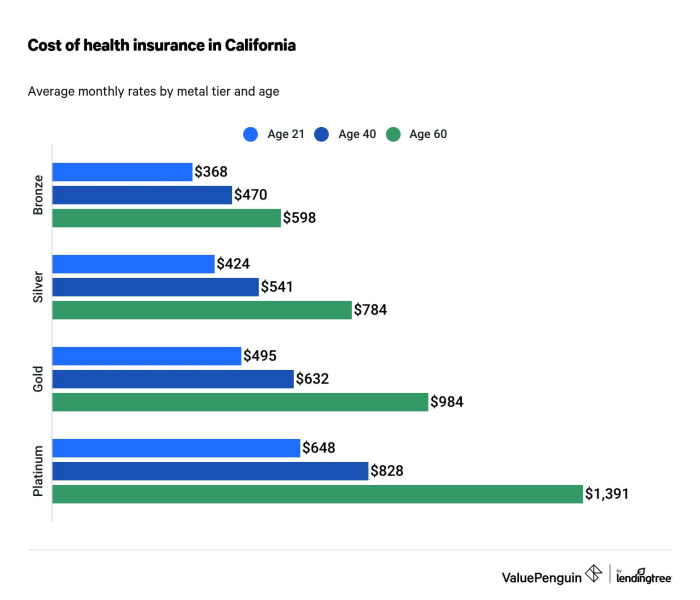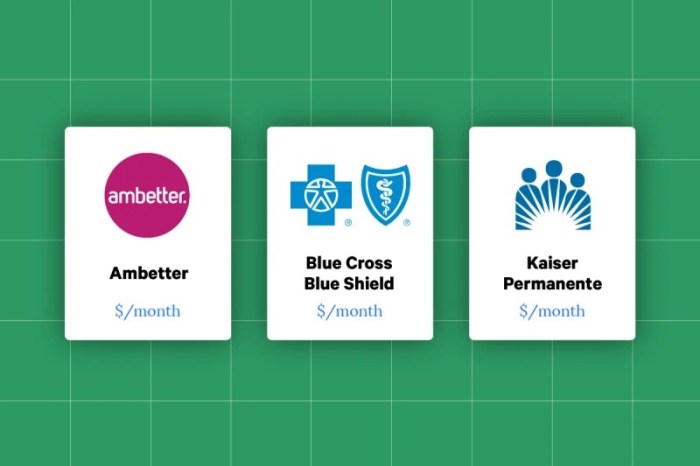Navigating the world of health insurance can feel like deciphering a complex code, especially when budget constraints are a primary concern. Finding cheap health insurance plans doesn’t mean sacrificing essential coverage; it’s about understanding the nuances of different plan types, leveraging available resources, and making informed choices that align with your individual needs and financial situation. This guide will equip you with the knowledge and strategies to secure affordable and adequate health insurance without compromising your well-being.
We’ll explore the factors driving health insurance costs, examine various affordable plan options, and provide a step-by-step process for finding the best fit for you. From understanding government subsidies to navigating online marketplaces and employing cost-saving strategies, we’ll demystify the process and empower you to make informed decisions about your healthcare future.
Defining “Cheap Health Insurance Plans”

The term “cheap health insurance plan” is relative and depends heavily on individual circumstances and needs. There’s no single definition, but it generally refers to plans with lower monthly premiums compared to more comprehensive options. However, it’s crucial to understand that lower premiums often come with trade-offs in terms of coverage and out-of-pocket costs.
Factors influencing the cost of health insurance are numerous and interconnected. These include the age and health status of the insured, location (cost of healthcare varies geographically), the type of plan chosen (e.g., HMO, PPO), the deductible and out-of-pocket maximum, the level of coverage (e.g., bronze, silver, gold, platinum), and the insurer itself. Competition among insurers also plays a role in shaping premiums.
Types of Cheap Health Insurance Plans
Several plan types are typically considered more affordable. These include Bronze plans, which have the lowest monthly premiums but the highest out-of-pocket maximums, and Catastrophic plans, available to individuals under 30 or those with a hardship exemption, offering minimal coverage except for catastrophic events. High-deductible health plans (HDHPs) also often fall into the “cheap” category, although the high deductible can present a significant financial risk if unexpected medical expenses arise. These plans are often paired with a Health Savings Account (HSA) to help mitigate this risk.
Premium Cost Comparison Across Plan Types
A hypothetical comparison, based on general trends, might illustrate the cost differences. For a 30-year-old individual in a specific region, a Bronze plan might have a monthly premium of $200, a Silver plan $350, a Gold plan $500, and a Platinum plan $700. These are illustrative figures and actual costs will vary widely based on the factors mentioned previously. Catastrophic plans would likely be at the lower end of this spectrum, potentially around $100-$150 per month, but with extremely limited coverage.
Cost and Coverage Trade-offs in Affordable Plans
The primary trade-off in affordable plans is between the monthly premium and the out-of-pocket expenses. Bronze plans, while cheap monthly, necessitate a significantly higher deductible and out-of-pocket maximum. This means the insured will pay more out-of-pocket before the insurance kicks in substantially. Conversely, higher-tier plans (Silver, Gold, Platinum) have lower deductibles and out-of-pocket maximums, but the monthly premium is considerably higher. Choosing the right plan involves carefully weighing the risk tolerance with the monthly budget. For example, a healthy young adult might find a high-deductible plan acceptable, while someone with pre-existing conditions might prioritize a plan with lower out-of-pocket costs, even if it means a higher monthly premium.
Maintaining Affordable Health Insurance

Securing affordable health insurance is a crucial aspect of financial planning and overall well-being. Maintaining affordability requires proactive strategies and a comprehensive understanding of your plan and healthcare options. This involves consistent effort and informed decision-making to avoid unexpected cost increases.
Maintaining affordable health insurance requires a multifaceted approach. It’s not simply about finding the cheapest plan initially; it’s about implementing strategies that keep costs low over the long term. This includes making informed choices about your plan, actively participating in preventative care, and being mindful of your lifestyle choices.
Preventative Care and Long-Term Cost Reduction
Preventative care plays a significant role in reducing long-term healthcare expenses. Regular checkups, screenings, and vaccinations can identify potential health issues early, allowing for less expensive treatment options and preventing the development of more serious, and costly, conditions. For example, regular blood pressure checks can help detect hypertension early, preventing potential heart disease or stroke down the line, which would incur significantly higher medical costs. Similarly, routine dental checkups can prevent minor dental problems from escalating into expensive procedures. Investing in preventative care is an investment in your long-term health and financial stability.
Questions to Ask Insurance Providers
Before committing to a health insurance plan, it’s crucial to thoroughly understand the details and potential costs. This involves asking specific questions to clarify coverage, cost-sharing, and potential out-of-pocket expenses. Information regarding the network of doctors and hospitals covered by the plan is also critical. Understanding the plan’s prescription drug coverage and the process for obtaining pre-authorization for specific procedures or medications is also important. Finally, clarifying the appeals process in case of denied claims is vital for protecting your financial interests.
Impact of Lifestyle Choices on Premiums
Lifestyle choices significantly impact health insurance premiums. Maintaining a healthy lifestyle, including regular exercise, a balanced diet, and avoiding smoking and excessive alcohol consumption, can lead to lower premiums. Insurance companies often offer discounts or lower premiums for individuals who demonstrate a commitment to healthy living. Conversely, unhealthy habits such as smoking, excessive alcohol use, and obesity can lead to higher premiums due to the increased risk of health problems. For instance, smokers often pay significantly higher premiums than non-smokers due to the increased risk of lung cancer and other smoking-related illnesses. Similarly, individuals with a high Body Mass Index (BMI) might face higher premiums due to the elevated risk of developing conditions like diabetes and heart disease.
Summary

Securing cheap health insurance doesn’t have to be an overwhelming task. By carefully considering your healthcare needs, understanding the different plan types and their limitations, and utilizing the resources available, you can find a plan that provides adequate coverage without breaking the bank. Remember, proactive planning and informed decision-making are key to securing affordable and reliable health insurance protection for the long term. Take the time to explore your options, compare plans, and choose the one that best suits your individual circumstances.
Common Queries
What does “cheap” mean in the context of health insurance?
“Cheap” refers to plans with lower monthly premiums compared to other options. However, lower premiums often come with higher deductibles, copays, or out-of-pocket maximums.
Can I get financial assistance to lower my health insurance costs?
Yes, many government programs like the Affordable Care Act (ACA) offer subsidies and tax credits to help individuals and families afford health insurance. Eligibility depends on income and other factors.
What’s the difference between a deductible and a copay?
A deductible is the amount you pay out-of-pocket before your insurance coverage kicks in. A copay is a fixed amount you pay for a doctor’s visit or other services.
What is an out-of-pocket maximum?
The out-of-pocket maximum is the most you’ll pay for covered healthcare services in a plan year. Once you reach this limit, your insurance company covers 100% of the costs.
How often can I change my health insurance plan?
Most plans have an annual open enrollment period, but you may be able to change plans outside of this period due to qualifying life events (e.g., marriage, job loss).